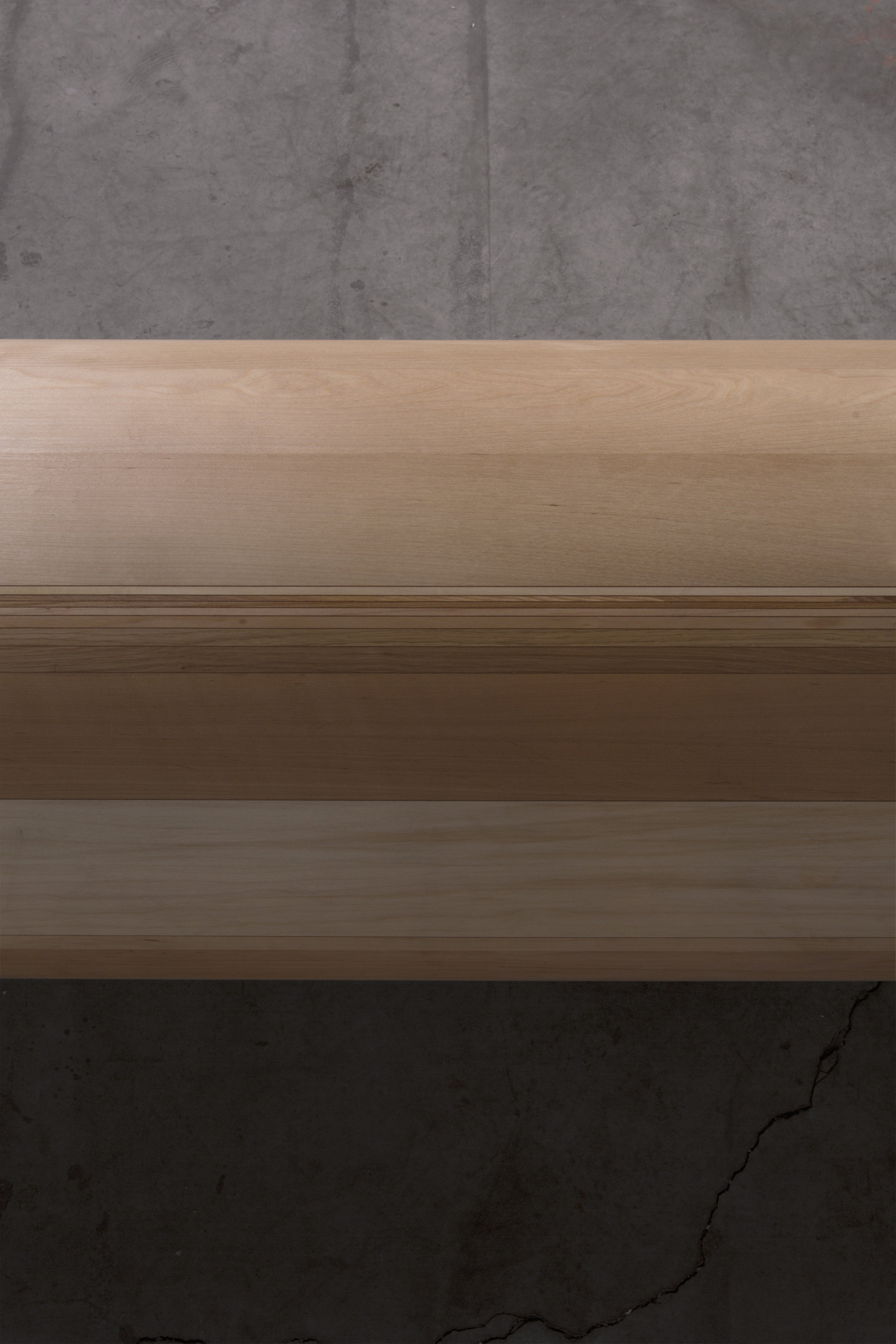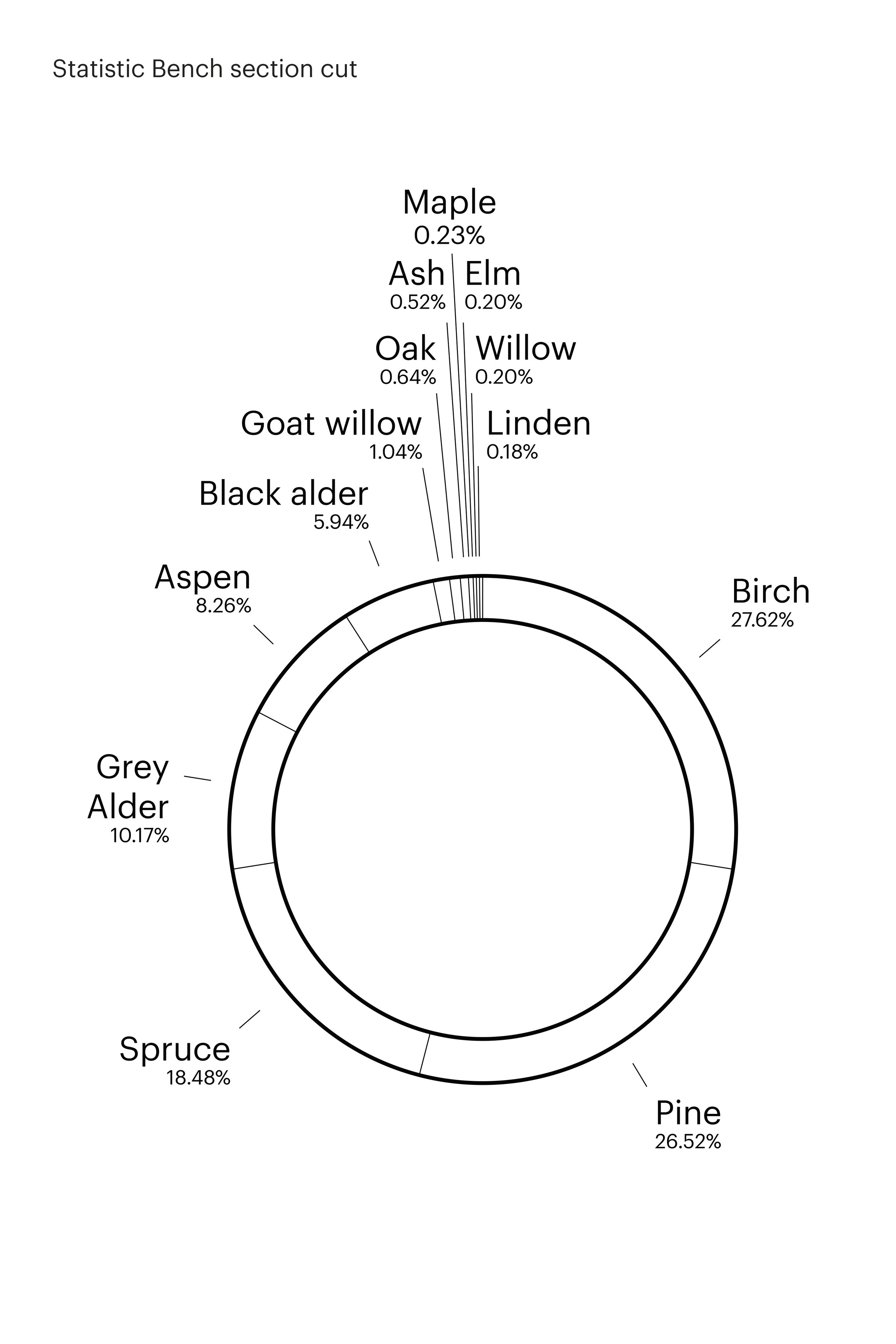Arthur Analts’ Matter to Matter
Latvia’s Identity - Design, Art and Nature
Everton Barreiro in conversation with Latvian London-based designer and artist Arthur Analts, winner of the Best Design award at the London Design Biennale 2018.
Choosing London’s historic and grand Somerset House edifice - an impressive and imposing late eighteenth-century construction designed by the architect William Chambers - later replaced by James Watt - was probably a very strategic choice to host London Design Biennale. The event’s organisers were ambitious. Projecting London’s growing global importance across the creative industries through the grandeur of Somerset House.
London Design Biennale was born out of London Design Festival, directed by Sir John Sorrell CBE and Ben Evans, with the appointment of the arts programmer and curator Sumantro Ghose as the 2018 event’s managing director, and having the artistic direction for the event’s second edition under the umbrella of Dr Christopher Turner - Head of Design, Architecture and Digital Collections at the Victoria & Albert Museum.
All rooms and wings of the eighteenth-century gigantic edifice were occupied by the intervention of curated installations and displays, responding, or at least trying to respond, to this year’s Biennale theme: Emotional States.
Established and emerging designers, artists and curators from world-class institutions, such as the Victoria & Albert Museum and the Cooper Hewitt, took part in supporting the event as well as representing their respective countries, the United Kingdom and the United States. Cultural institutions and design practitioners were commissioned to represent forty countries, cities and territories, creating pavilions that very much revealed national themes.
Did all nation-guests manage to accomplish the challenge to successfully respond to Emotional States? Unfortunately not. However, the absolute winner of the 2018 London Design Biennale, the Latvia Pavilion, deservedly won the main award for best design of this year’s event. The Latvian industrial designer, Arthur Analts, educated between Riga and London’s Central Saint Martins, had definitely understood the contest brief.
Analts has been living in London for the last six years. Heading his own commercial practice, Variant Studio, the designer exceeded the expectations set out by the 2018 Biennale brief. Entitled Matter to Matter, the Latvia Pavilion was co-curated by Inese Baranovska from the Decorative Arts and Design Museum of Latvia, receiving full support from the country’s Ministry of Culture, its Embassy to the United Kingdom and the Latvian Investment and Development Agency (LIAA).
This extraordinary support by Latvia’s political and public institutions to Arthur Analts’ incredible design vision was not a coincidence. The year of 2018 is the year when the baltic nation celebrates its centenary, creating a platform at LDB to display the country’s assets, strengths, innovations and national ambitions. Latvia was not the only pavilion to successfully respond to Emotional States, however, it would be very appropriate to say that it delivered on the challenge with mastery.
The pavilion highlights one of Latvia's key preoccupations - the preservation of its nature which is at the heart of the nation’s cultural and national identity. The pavilion epitomises the combination of public and private efforts in telling a narrative about a small, nonetheless ambitious and innovative country.
Talking to Arthur Analts about the Latvia Pavilion was inspiring as well as a lesson of humbleness. The visionary designer and artist clearly understands about being truly understated while sustaining a confident belief in his own practice. Analts described Matter to Matter to me as a ‘broken refrigerator’ during our conversation.
A large rectangular glazed green panel takes over the entire rear wall of the room dedicated to the Latvia Pavilion. Deliberately working as a ‘broken refrigerator’, the panel takes the humidity from the air within the room and the moisture condensates on the panel. The technology was developed for a year and a half by Analts and a refrigerator’s manufacturer in Latvia, which utilises a mechanical system that transfers heat with a silicone paste distributed across an aluminium panel that gets cooled, reacting with copper tubing containing freon gas, water-resistant plywood, and heat insulation.
Such technology, or mechanical system, produced a condensation that reacted to the levels of humidity within Somerset House, which reflected the humidity levels outside the building.
The choice of colour for the panel is green, representing Latvia’s forests. About 52% of the country’s territory is covered in forests - a product of reforestation and the country’s resilience to counter the negative products of industrialisation. This commitment and determination to preserve Latvia’s forests demonstrate the will of successive governments to protect the Baltic nation’s image as a leader in the field.
While the large glazed panel references the green colour from the country's forests, a sleek and smooth bench in the shape of a hollow cylinder resembling a log left in the forest compliments the installation. Entitled Statistic Bench, the object has an educational purpose, as it represents thirteen different qualities of wood grown in Latvia. The object features the distinct shades in the bench which correspond to the prevalence of the country’s rich forests and woods species, conveying a narrative of Latvia’s natural landscape through the execution of high-end design.
Cambridge University-educated Dr Viesturs Celmins - a Latvian social-anthropologist and specialist in urban planning and design - recently attending the Latvia Centenary event held at the Courtauld Institute, commented that Arthur Analts’ Matter to Matter symbolises ‘the collective Latvian environmental and ecological spirit through culture and design’. Analts’ talk at the same event described his own projects as being about 'emotions, sustainability, tradition, technologies, nature’, projecting Latvia as a forward-looking nation, out of its Soviet-era past into the twenty-first century.
Matter to Matter produced all sorts of emotions, responses and reactions from spectators. Visitors to the pavilion engaged, interacted and played with the installation, leaving their marks on the glazed panel, while watching the print from their hands slowly disappearing through the condensation, which could be accelerated depending on the humidity levels in the room. One could say that the marks left as a result of human tactile engagement with the installation, represent the human transience of emotions. Children tended to be less timid than adults in interacting with Matter to Matter. Infants would instinctively point out to the 'cold and wet’ surface of the panel.
Analts did not only want to tell a story about his home country, he also wanted to convey a personal emotional experience. He evokes the memory of his childhood in Latvia, which depending on the region and season can be quite humid. Drawing on window glasses which present condensation or while having a shower in London has been a habit. The designer recalls noticing the marks of his brother’s hand-drawings left on the window glass of his London home, after his brother’s departure back to Latvia.
Sensory experiences were heightened and highlighted by many visitors who appeared amused by the installation. Others would sit on the Statistic Bench facing the panel, meditating, resting, reflecting on, relaxing. The London-based Latvian designer brought nature into the heart of London whilst encouraging visitors to notice condensation, a natural phenomenon usually overlooked by us. He proposed a moment of peaceful contemplation in this currently unpredictable and ruthless post-industrial world.
Transient memories and emotions would drip away on the wet reflective glazed panel, just as they fade away from our conscience. While talking to me, Analts points out to a ‘Rothko-looking like’ shape patch created by the very low levels of humidity on the glazed panel that day. The shape that references Rothko’s paintings stayed on for quite some time. Matter to Matter swallows you in, just like Rothko’s incredibly powerful and hypnotic colour panels. Analts designed and curated an installation that not only fulfilled the Biennale’s brief, but also his own 'emotional state'.
Although the artist considers himself a ‘city person’, claiming that he 'loves London’s dust’, he expresses an increasing inclination towards spending time out in nature, perhaps indicating a balance between a life in the metropolis, and a life away from technologies, smartphones, social media and its negative impact on mental health. Analts’ installation invites visitors to pause for a few minutes, to contemplate nature, and in this particular case, art too.
Matter to Matter is an incredible design achievement, a successful result of resilient research, as well as a touching and poetic work of art. It could, and it should be exhibited by any world-class museum and art gallery, just as implied by Dr Christopher Turner during the Latvia Centenary event, when the V&A curator was inquiring with the artist about what’s next in terms of future plans. Matter to Matter does not only produce emotions out of its spectators, it was conceptually created out of a memory, out of an emotion.
Contributors
Essay Co-editing: Author and Assistant Curator of Modern and Contemporary Design at Cooper Hewitt Museum, New York, Dr. Emily Orr (RCA/V&A History of Design PhD).
Film and Editing: Lara Elliott
Images: courtesy of the designer Arthur Analts















